Billionaire reveals Hyperloop supersonic transport system
News: entrepreneur Elon Musk has revealed designs for a supersonic Hyperloop transport system to link Los Angeles and San Francisco in just 30 minutes (+ slideshow).
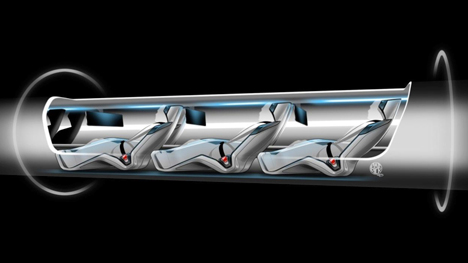
Elon Musk, billionaire and founder of Paypal, electric-car firm Tesla Motors and space technology company SpaceX, has revealed designs for Hyperloop - a supersonic Jetsons-style transportation system for California. Travelling at over 700 mph, passengers would sit in a 1.35-metre-wide tube and be blasted through the 382-mile tunnel linking Los Angeles and San Francisco in just 30 minutes.
After months of speculation, Musk revealed plans to use magnets and fans to shoot capsules that float on a cushion of air through a long tube. "Hyperloop is a new mode of transport that seeks to change [a] paradigm by being both fast and inexpensive for people and goods," said Musk in the design study.
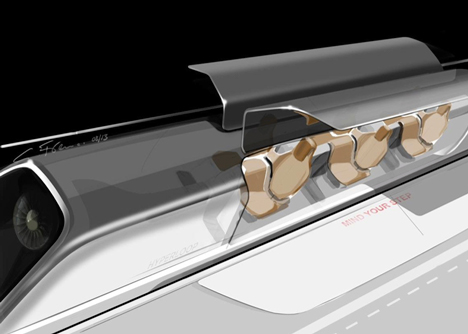
In the designs, passenger capsules are transported at high speed through a low pressure tube, elevated over the land between the two cities. "The capsules are accelerated via a magnetic linear accelerator affixed at various stations on the low pressure tube with rotors contained in each capsule," Musk said.
Passengers would not notice the speed and travel by Hyperloop would feel a lot like being in an aeroplane, Musk explains. "It should really feel just super smooth and quiet. And there'd never be any turbulence or anything," he said.
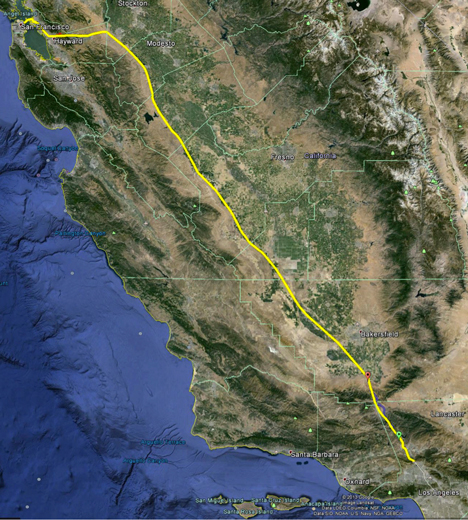
Well-known for electric cars, civilian space travel and a vision for interplanetary evolution and sending humans to Mars, the transportation tycoon says Hyperloop would be twice as fast as an aeroplane, cheaper than a bullet train and completely self-powered. It would be both weather- and earthquake-resistant.
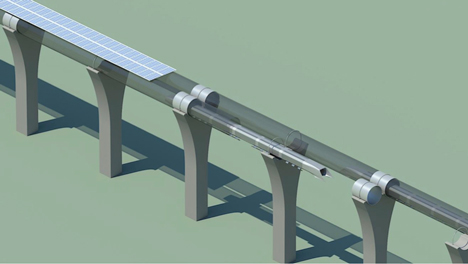
"If we are to make a massive investment in a new transportation system, then the return should by rights be equally massive," Musk said. "Compared to the alternatives, it should ideally be: safer, faster, lower-cost, more convenient, immune to weather, sustainably self-powering, resistant to earthquakes and not too disruptive to those along the route."
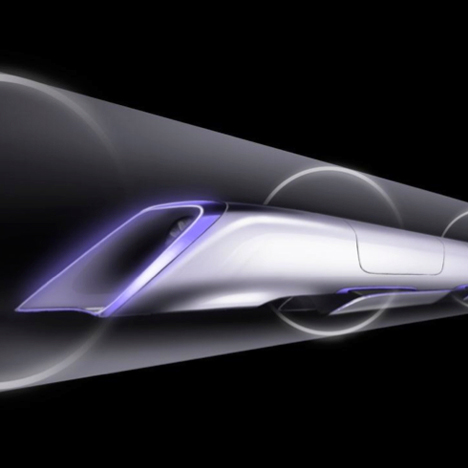
Musk made the announcement via Twitter last night and a full 57 page pdf document detailing his ideas was published shortly after 9.30pm GMT. He held a 30 minute conference shortly after.
The designs for Hyperloop are open source and Musk has asked for feedback from others to advance the design and make it a reality.

The entrepreneur first mentioned Hyperloop in July 2012 and had left amateur designers, engineers and investors to speculate ever since. He described Hyperloop as the "fifth mode of transportation" - the previous four being train, plane, automobile, and boat. "It's not a vacuum tunnel, but a cross between Concorde, a rail-gun and air hockey table," he said at the time.
"The Hyperloop is something that would go effectively faster than the speed of sound. Conceivably you could live in San Fran and work in LA," he added.
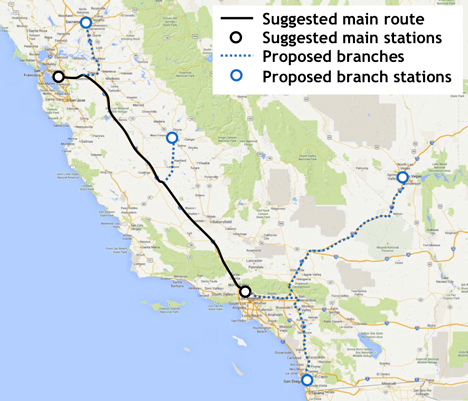
Musk has also said his Hyperloop designs will rival the high-speed train already proposed in the US. "The $60 billion bullet train they’re proposing in California would be the slowest bullet train in the world at the highest cost per mile." he said. "They're going for records in all the wrong ways. The cost of the SF-LA Hyperloop would be in the $6 billion range."
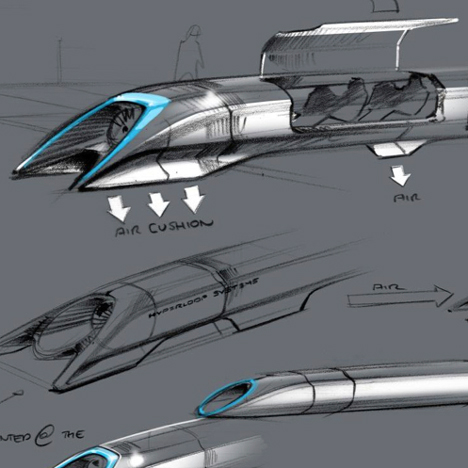
Watch a recording of Elon Musk talking about Hyperloop:
Musk's ideas for futuristic transport don't stop there. Speaking online during a Google "Hangout" event with Virgin Group CEO and founder of Virgin Galactic Richard Branson on Friday, Musk said he has another idea, to rival Concorde - a vertical lift-off supersonic electric passenger jet. He said that he envisaged journeys over 1000 miles long being done in aircraft that would travel faster than the speed of sound.
"If you fly high enough and have the right geometry of plane, you can make the sonic boom no louder than current planes," he said.
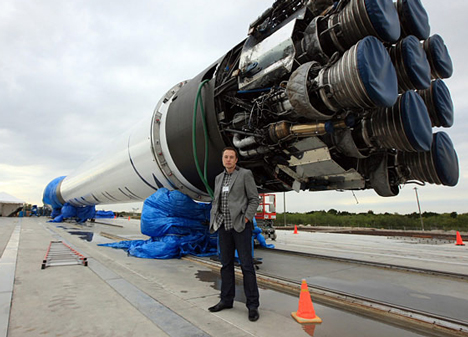
Musk commented that vertical take-off and landings would mean passengers could land closer to a desired destination - eliminating the need for large airports and long runways. Too busy - with electric car innovations, hovering reusable rockets and passenger flights to Mars - to launch into the vertical jet business just yet, he said: "If somebody doesn't do [it] then maybe, at some point in the future, I will."
See more transport on Dezeen »
Here is the full announcement from SpaceX/Elon Musk:
Hyperloop
August 12, 2013
By Elon Musk, Chairman, Product Architect, CEO
When the California "high speed" rail was approved, I was quite disappointed, as I know many others were too. How could it be that the home of Silicon Valley and JPL – doing incredible things like indexing all the world's knowledge and putting rovers on Mars – would build a bullet train that is both one of the most expensive per mile and one of the slowest in the world? Note, I am hedging my statement slightly by saying "one of". The head of the California high speed rail project called me to complain that it wasn't the very slowest bullet train nor the very most expensive per mile.
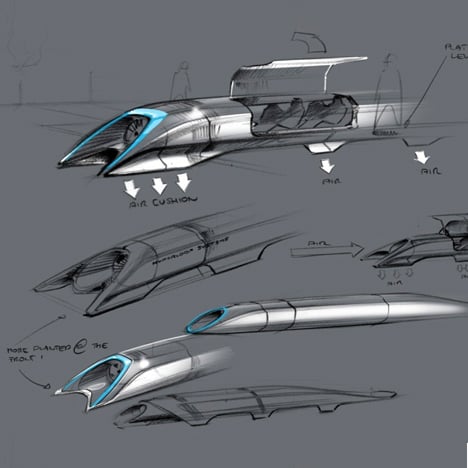
The underlying motive for a statewide mass transit system is a good one. It would be great to have an alternative to flying or driving, but obviously only if it is actually better than flying or driving. The train in question would be both slower, more expensive to operate (if unsubsidised) and less safe by two orders of magnitude than flying, so why would anyone use it?
If we are to make a massive investment in a new transportation system, then the return should by rights be equally massive. Compared to the alternatives, it should ideally be:
- Safer
- Faster
- Lower cost
- More convenient
- Immune to weather
- Sustainably self-powering
- Resistant to Earthquakes
- Not disruptive to those along the route
Is there truly a new mode of transport – a fifth mode after planes, trains, cars and boats – that meets those criteria and is practical to implement? Many ideas for a system with most of those properties have been proposed and should be acknowledged, reaching as far back as Robert Goddard’s to proposals in recent decades by the Rand Corporation and ET3.
Unfortunately, none of these have panned out. As things stand today, there is not even a short distance demonstration system operating in test pilot mode anywhere in the world, let alone something that is robust enough for public transit. They all possess, it would seem, one or more fatal flaws that prevent them from coming to fruition.
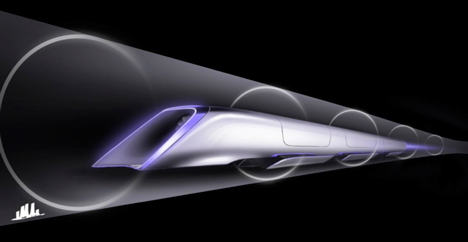
Constraining the Problem
The Hyperloop (or something similar) is, in my opinion, the right solution for the specific case of high traffic city pairs that are less than about 1500 km or 900 miles apart. Around that inflection point, I suspect that supersonic air travel ends up being faster and cheaper. With a high enough altitude and the right geometry, the sonic boom noise on the ground would be no louder than current airliners, so that isn't a showstopper. Also, a quiet supersonic plane immediately solves every long distance city pair without the need for a vast new worldwide infrastructure.
However, for a sub several hundred mile journey, having a supersonic plane is rather pointless, as you would spend almost all your time slowly ascending and descending and very little time at cruise speed. In order to go fast, you need to be at high altitude where the air density drops exponentially, as air at sea level becomes as thick as molasses (not literally, but you get the picture) as you approach sonic velocity.
Continue Reading: Hyperloop-Alpha.pdf